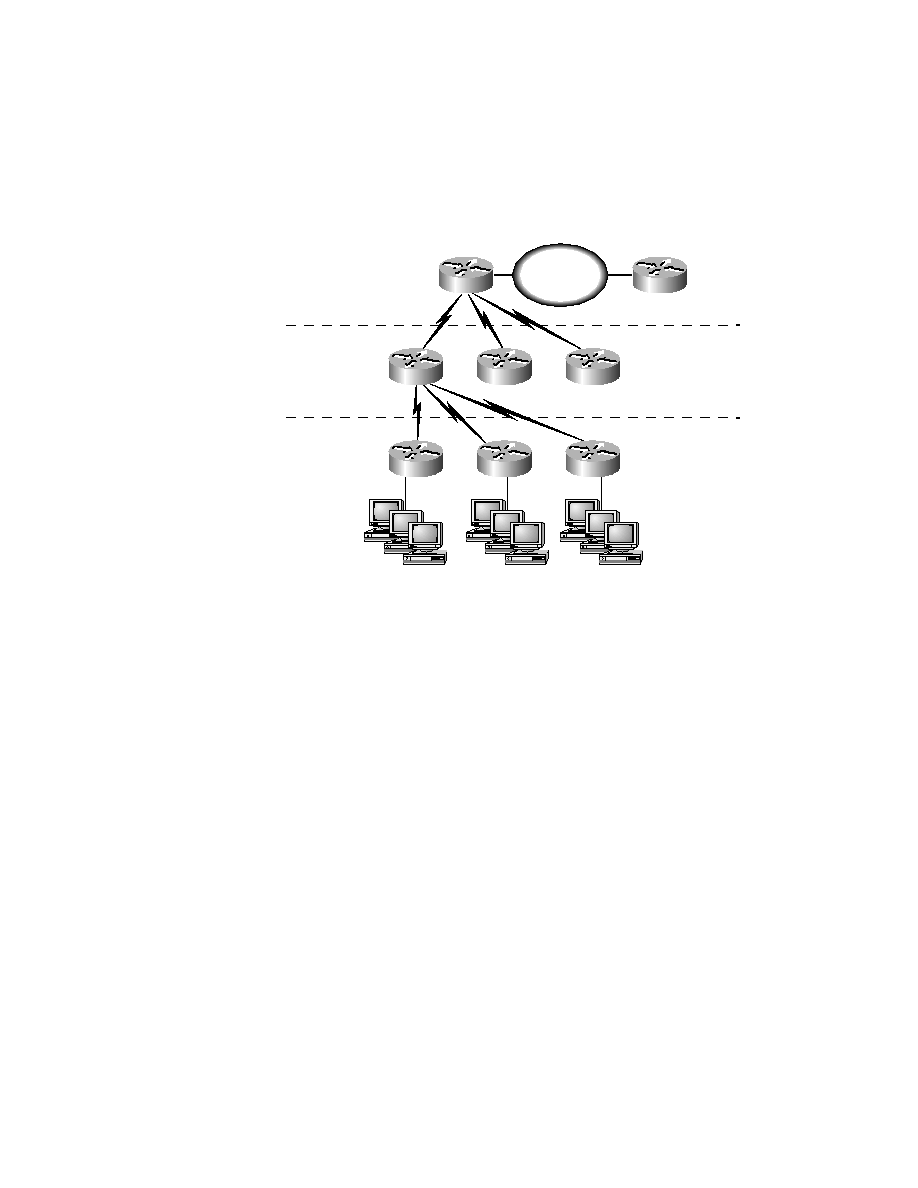
10
Chapter 1
Scaling Large Internetworks
F I G U R E 1 . 4
Hierarchical network design
Now, let's take a closer look at each of the layers.
The Core Layer
The
Core layer
is literally the core of the network. At the top of the hierar-
chy, the Core layer is responsible for transporting large amounts of traffic
both reliably and quickly. The only purpose of the Core layer of the network
is to switch traffic as fast as possible. The traffic transported across the core is
common to a majority of users. However, remember that user data is pro-
cessed at the Distribution layer, and the Distribution layer forwards the
requests to the core if needed.
If there is a failure in the core, every single user can be affected. Therefore,
fault tolerance at this layer is an issue. The core is likely to see large volumes
of traffic, so speed and latency are driving concerns here. Given the function of
the core, we can now consider some design specifics. Let's start with some
things that we know we don't want to do:
Don't do anything to slow down traffic. This includes using access
lists, routing between virtual local area networks (VLANs), and
packet filtering.
Core
layer
Distribution
layer
Access
layer
FDDI Ring
Users' machines
Users' machines
Users' machines
Workgroups
Copyright ©2001 SYBEX , Inc., Alameda, CA
www.sybex.com
